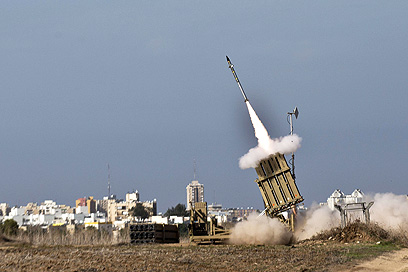
US to give Israel thousands of 'bunker-buster' bombs
Pentagon asks Congress to increase military aid to Israel by $647M with aim of replenishing IDF munitions following recent Gaza campaign
The Pentagon has appealed to Congress in a bid to increase the United States' military aid to Israel by $647 million, Ynet learned Tuesday.
According to a Bloomberg report, in wake of Operation Pillar of Defense, the Pentagon wants to arm the IDF with a tail kit system used to convert free-fall bombs into satellite-guided ordnance, as well as with missiles that can be mounted on F-15 and F-16 fighter jets and are capable of penetrating underground or fortified targets.
Related stories
- US supplies Egypt with F-16 fighter jets
- US military aid would delay Israeli strike
- Iron Dome to ring up more expenses
The military aid includes 1,725 JDAM tail kits together with BLU-109 bombs, also dubbed "bunker-buster" and weighing in at more than 900kg. According to the Bloomsberg report, the bombs are intended to "defeat an enemy’s most critical and hardened targets such as protected weapons storage sites, and penetrate as much as six feet of reinforced concrete."
According to Jeff White, a military analyst with the Washington Institute for Near East Policy, the aid package is partly motivated by Washington's desire to assist Israel in replenishing its munitions stockpile which was diluted following November's campaign against Gaza Strip's terror groups.

Iron Dome in action (Photo: AFP)
During the campaign , Israel dropped numerous bombs on Gaza in an attempt to halt rocket and missile fire. The IDF also targeted smuggling tunnels, rocket firing pits, weapon mills and munitions warehouses.
"Hamas and the other groups had lots of underground targets that were attacked," White said, further speculating that the additional weapons “"Could be an effort to give the Israeli Air Force a capability for more extended or more extensive air campaigns than before."
However, he was quick to add that the weapons are "Not suitable for the really deep underground facilities," but rather for command posts, shelters and air defense facilities.
Kenneth Katzman, a Middle East analyst for the Congressional Research Service, said that the move "Does not appear intended to transfer any new capability that Israel could use against the most hardened sites of Iran’s nuclear program," located deep underground under many layers of fortified concrete.
- Receive Ynetnews updates directly to your desktop










